
Once a popular tearoom, Number 11 has now become the book festival’s office, which is celebrating the 20th anniversary of Wigtown as Scotland’s national book town.
Five years after my first engagement with the Wigtown Book Festival, I returned to Wigtown, a small town in Dumfries and Galloway, to carry out one of my most ambitious projects to date. My proposal had been accepted and I was about to wallpaper the facades of eleven buildings on the town square for the Festival’s twentieth anniversary. The project would help me gain an entirely new understanding of a place I thought I was familiar with.
I wanted to shine a spotlight onto the town’s residents and create a platform to make it easier for residents to interact with festival visitors. Many of Wigtown’s residents support the festival, often as volunteers behind the scenes. They’ve played a huge part in contributing to its growth over these past twenty years. Visitors often remark on how charming they find the town and its people, and they’re often curious to find out more about the place.
The project started with a series of visits to desired houses on the town square. Moving from door to door I advertised my idea in the hope that residents might like to participate in the project. To my surprise, everyone approached was supportive, in spite of not being familiar with the artform of wheat pastings or knowing much about street art in general. Once I had permission to go ahead, I started developing custom-made wallpaper patterns and images that reflected the unique history of each building. My concept was to turn wallpapers, which traditionally speak to us from the interior walls, inside-out so that they could tell the buildings’ stories to the wider public. Hence the title, “If These Walls could Talk”.

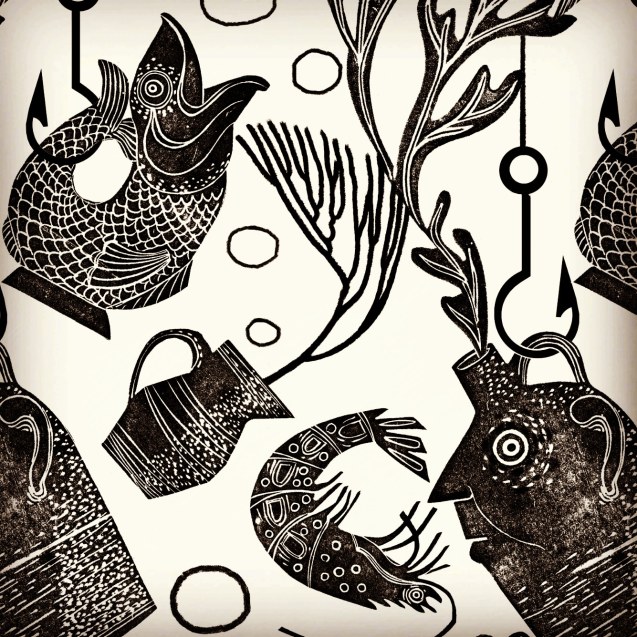
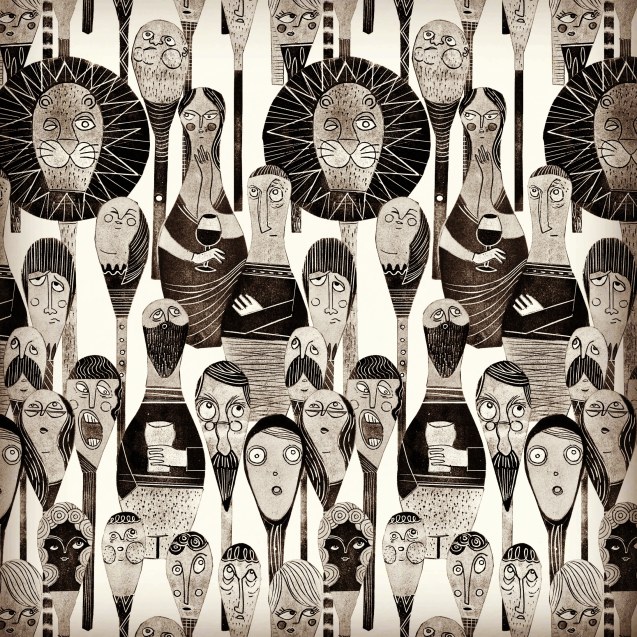
One of the questions I was often asked was, “Have you ever done this before?” The answer was simply, “No, I haven’t.” At this point, I knew very little about applying paper to interior wall spaces, let alone the exterior of a building. I was generally a bit reluctant to speak about the project because a quiet voice inside of me, in spite of working very hard, wasn’t yet convinced I could actually do it. I was afraid of spreading the news about something that could turn out to be a failure in my career. But things moved forward, and step by step, I learnt many new things, overcame old fears, and developed new ones.
Day One of the installation was a real success. I had everything I needed ready, including around 800 meters of printed paper and my friend, the well-known street artist Joe Caslin, had come over from Ireland to train me and my two helpers, Ken Ilgunas and Robin Burns, on how to paper buildings. Luckily, there were no real issues and within two days we had two major sites covered. For the first time in weeks I was beginning to feel a sense of relief. We might actually really do it.
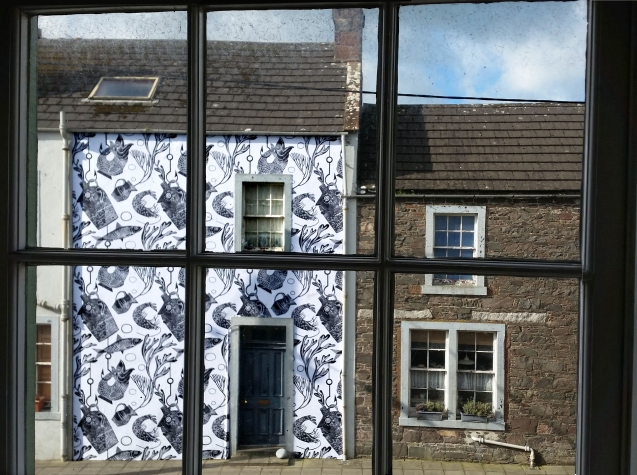

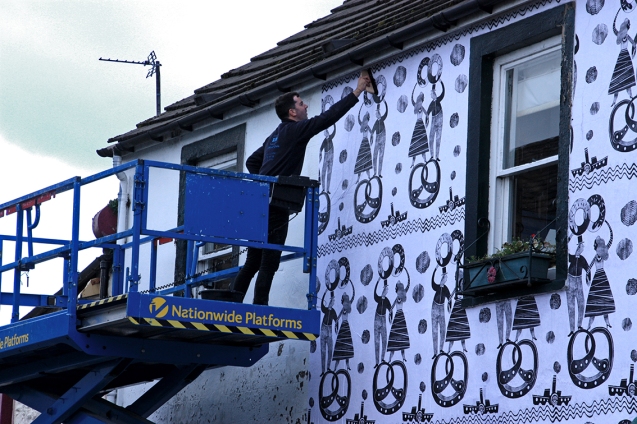
 On Day Three, after Joe had left, we found ourselves up eight meters on the scissor lift, swaying in the wind, feeling slightly sea-sick, wet with rain, and trying to put paper up on a bumpy and wet wall. I don’t think we did a great job and the pieces didn’t last very long. It turned out that this particular wall was just too exposed to the prevailing wind and rain. To our relief, the other ten buildings were fine and the work held up well. Or so we thought.
On Day Three, after Joe had left, we found ourselves up eight meters on the scissor lift, swaying in the wind, feeling slightly sea-sick, wet with rain, and trying to put paper up on a bumpy and wet wall. I don’t think we did a great job and the pieces didn’t last very long. It turned out that this particular wall was just too exposed to the prevailing wind and rain. To our relief, the other ten buildings were fine and the work held up well. Or so we thought.


Once this building was called the Red Lion, which was the busiest pub in town, with a skittles alley. The building was previously owned by the daughter-in-law of Professor Spooner (originator of the term, “spoonerism”). There was once a big lightening storm, where everyone hid out in the pub to ride out the storm and have a tand grime.

After completing the installation, I travelled back home to Edinburgh for a couple of days. That is when Storm Ali decided to pay a visit. While this kind of work is made to withstand a good bit of rain and wind, Ali came on just a little too strong. I kept receiving messages about the damage done and this is when I starting developing a new fear. I had put months’ worth of work, spent a good bit of money, and even got on the front cover of the Scotsman — all for a project that wouldn’t even manage to survive the beginning of the festival, for which it was made.

The whole idea of “If These Buildings could Talk – what might they say?” began to take a new turn. What if they had no desire to talk? What if the building that had once been Wigtown’s most popular pub had decided to go completely silent? Perhaps this town and its weather just didn’t want a stranger to stop by and make it say something.
Luckily the damage was not too severe. Only three out of eleven artworks required serious repair. In retrospect, storm Ali even turned out to be a bit of a blessing because my team and I had to return to fix up bits while the festival was in full swing. This allowed visitors to observe the process and ask questions directly, which I loved! The town’s people got to join us on our emotional rollercoaster journey. Most residents had been gutted to see bits come down in the storm, and they were excited to watch us fix the damage.
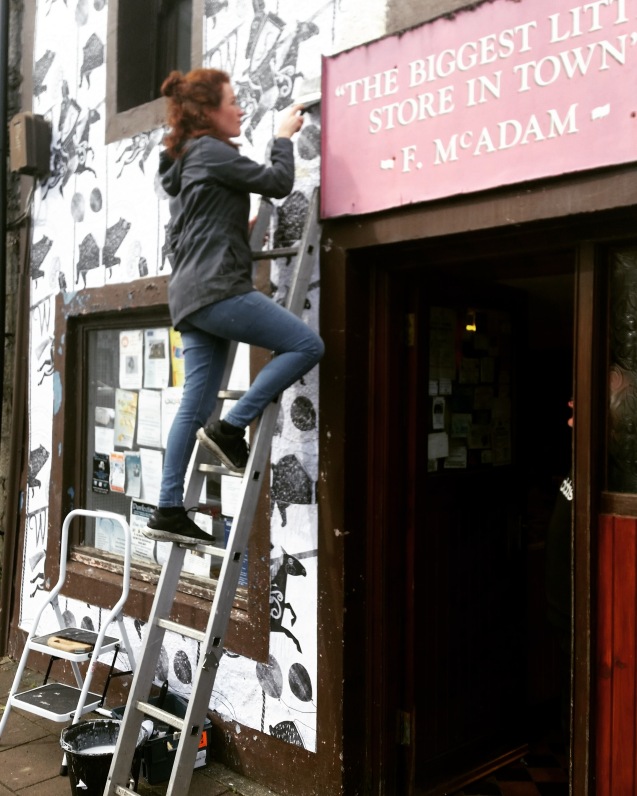

Put a bet on horses and greyhounds at Wigtown’s local Bookie’s. These greyhounds are escaping form the old Bookmakers, which used to be situated across the road in the 1990s.
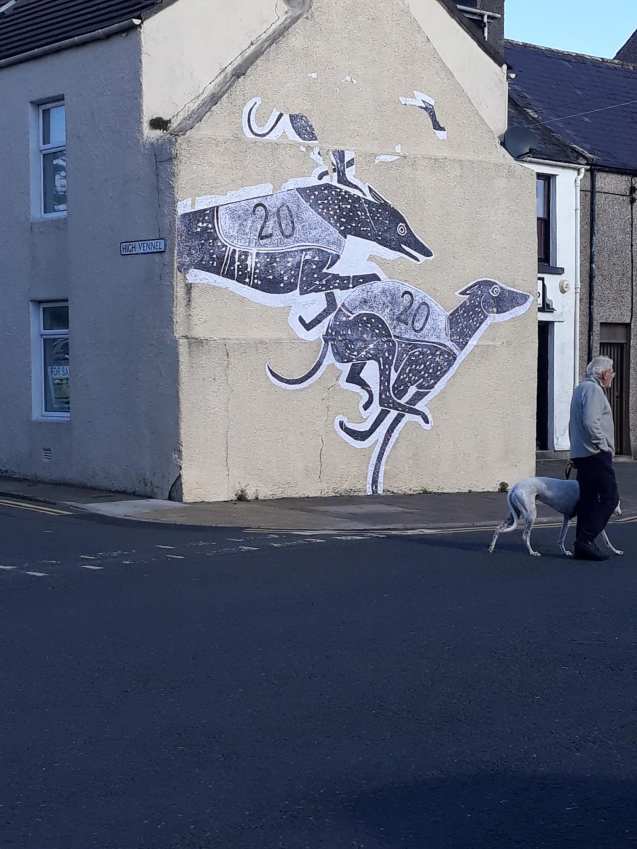
When in the middle of the night you find yourself high up over the chimneys of a town, swaying in the wind, holding a piece of sticky paper, the paper stuck to your face, a knife glued to your arm, or when you find yourself maneuvering underneath a drain pipe trying to fit wallpaper around it, or when you are lying on the pavement trying to attach something to the bottom of a building with dirt stuck to your wallpaper pasted skin, you know you will never feel the same again about a place. Many ginger hairs are now stuck to Wigtown’s walls. I am literally a part of this town.

The wall to the left used to be that of a vegetable shop. It is now a community shop where you are invited to pop in to discover all things weird and wonderful.

Coaches, led by horses, would pass through this tunnel to get to the Galloway Hotel. Here, there were stables; now, it’s Byre Books.
The other thing I learned is to overcome a certain reservation I had about street art and how older generations may perceive this kind of work. The idea of street art is often associated with youth culture: places like Berlin and Barcelona, not exactly Wigtown in Dumfries and Galloway.
The age demographic here is mixed, but obviously a good bit older than in most urban areas. A lot of people move to the area to retire. During installation I remember a situation in which two elderly ladies passed by muttering something disapproving, which made me develop another one of my fears. What if the majority of the townspeople disapproved of the project, even if it was merely meant to be temporary?
I believe that when you do something in public, it is important to be able to accept some criticism. The difference between this kind of work and illustrating something for a book or placing something in a gallery is that people can’t choose to not see it, read it, or buy it. There’s a chance that you may look out of your window and hate what you see. But I was eager to give something enjoyable to the people of the town and I realized that while most people were delighted there was going to be another voice that I had to accept.
Fortunately, the responses I received were almost entirely enthusiastic. I got strong support for my work and discovered that while Wigtown is far from being Berlin, the majority of its people are open to new ideas, and take delight in playfulness, humour and stories. And most remarkably, they welcomed an artist who hasn’t only come from Edinburgh, but who also came from outside the UK. They allowed me to give their town a wee make-over for the festival!
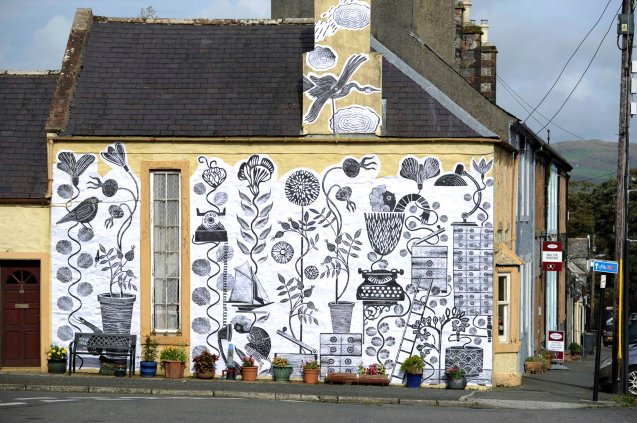
This was once the gatehouse of Wigtown and later a shipping office in the 1950s. This building was a playground for the current owner, who grew up in the house, where she explored the many wooden cupboards and hatches, containing the remains of the shipping office. Could the lively exterior have been inspired by a childhood of imagination?

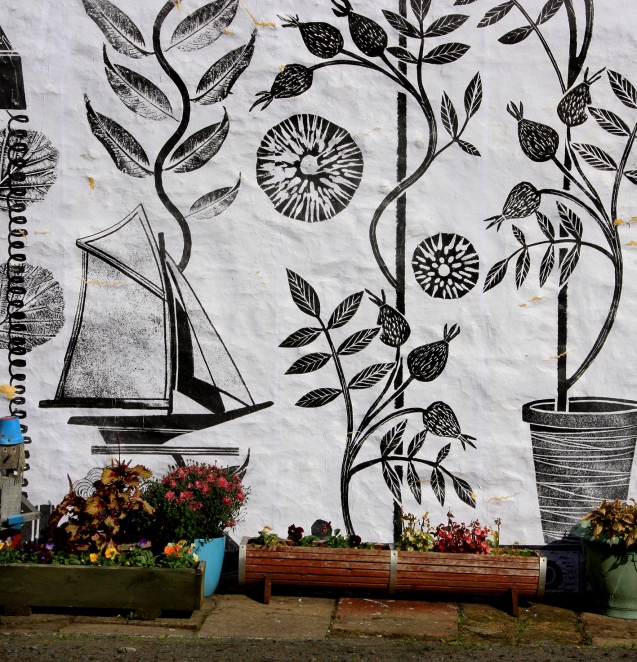

Scad’s sweet shop is popular amongst the town’s youngest residents. It served as a toy shop until the 1960s, run by his father, and later as a sweet shop, run by his mother. This shop has always been in his family’s hands with a focus on children. Scad was awarded an MBE for his many decades of service to the community. Say hello and pick up some of the shop’s bestselling pick ’n mix sweets.
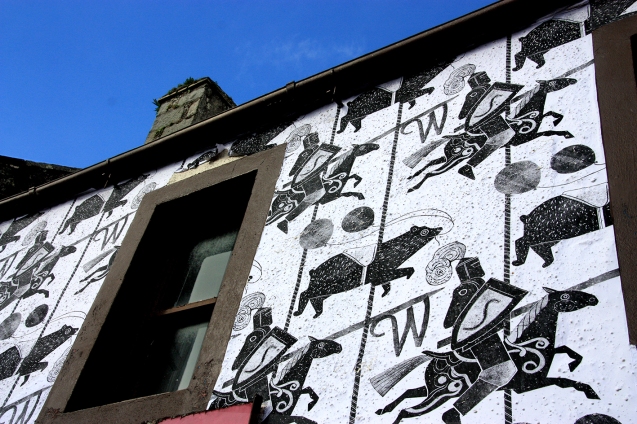

The owner of this building recalls finding seventy-one gin bottles, left there by previous tenants. People used to believe it was haunted: Was that because drunks used to sleep in it when it was empty? The soggy basement was once the perfect habitat for a colony of frogs.

Once the town’s bakery, this building became the Open Book in 2014, a destination for book lovers who travel to Wigtown from all continents to run their own bookshop for up to a fortnight. Earlier in the year, the shop was featured in local and international newspapers after a visitor proposed to his girlfriend over the counter, hiding a ring in a hollowed-out book.
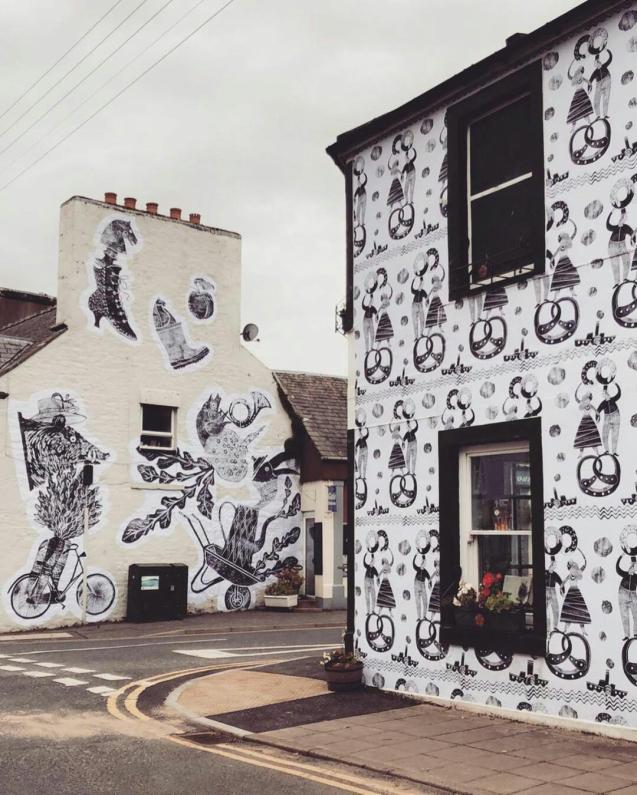
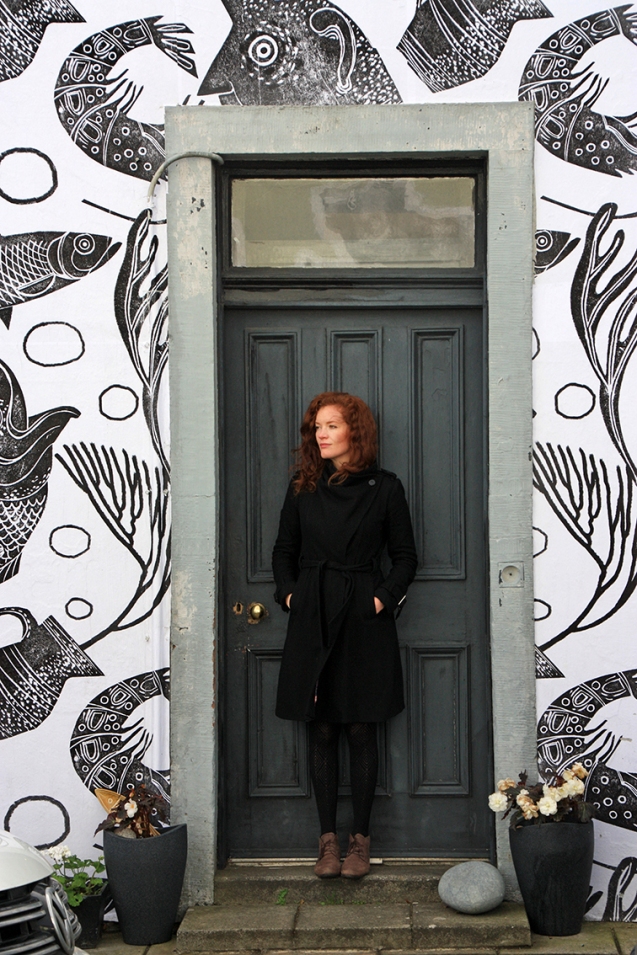
This was both a fishmongers, which sold whole fish and kippers, and a pottery shop. What happens when the two meet on a wallpaper?

This pattern was created for the building in which Machar’s Initiative (a community development support group) and RSPB operate. in the 1990s it functioned as an Ironmongers. To combine the three, birds are now building their nest using bits of ironmongery.
I am not only very grateful for the community’s overall support but also to have been given another great artistic opportunity by the people behind the Wigtown Book Festival, who have contributed to my artistic development since I graduated from art college six years ago. Big thanks go out to everybody involved, from the residents and participating house owners, to the festival staff and volunteers, and lastly to my wonderful installation team.
I can’t wait to do it all again – wall-space anyone?

Photo credit 14 Colin Tennant, Photo credit 12, 13, 17 Colin Hattersley